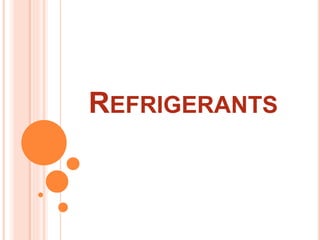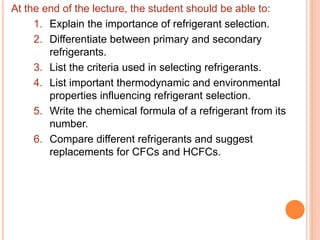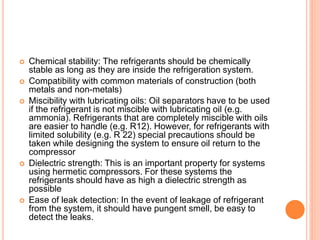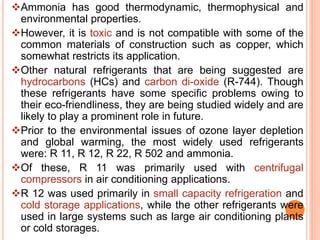This document discusses refrigerants used in refrigeration systems. It begins by defining refrigerants and their role in absorbing and transmitting heat. It then classifies refrigerants as primary or secondary and discusses their properties. The document outlines several criteria for selecting refrigerants, including thermodynamic, environmental, safety and economic factors. It also describes the numbering system used to designate refrigerants and compares common synthetic and natural refrigerants. The overall aim is to explain the important considerations for choosing suitable refrigerants.









































